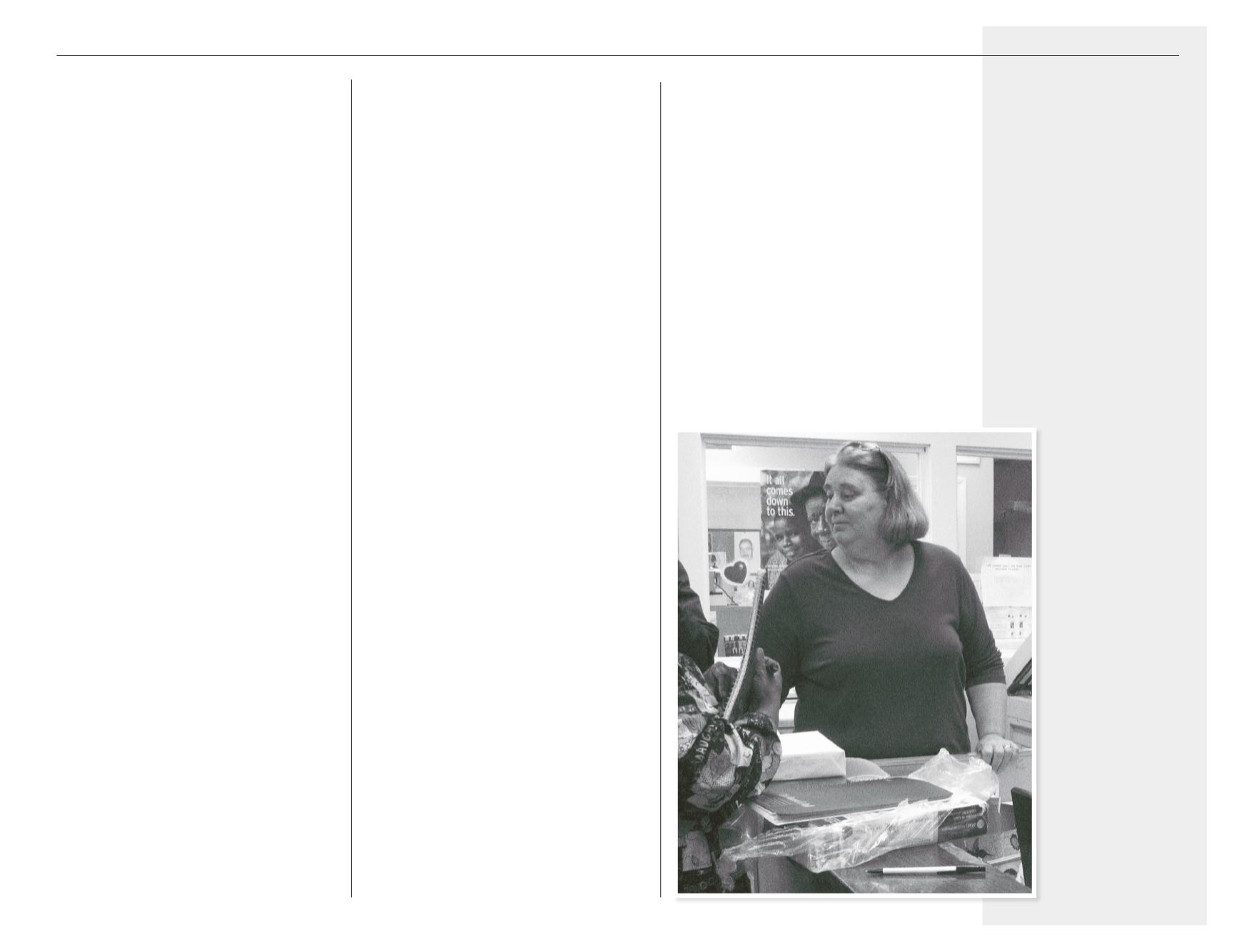

131
C
hapter
F
our
:
‘Y
ou
S
hall
H
ave
the
P
oor
W
ith
Y
ou
A
lways
’ (1978 – 2002)
abstract of the Kingdom House building
and tower in blue with the flame of the
United Methodist Church and outer
circle in red. During the summer of
1997, Kingdom House volunteer Lance
Nunes developed a website for the
agency.
Partnerships have been vital to the
longevity and success of Kingdom
House’s mission. Wyman Center, Inc.,
traces its beginnings to 1898, when
community leaders of St. Louis founded
the St. Louis Children’s Industrial Farm
for urban children living in tenements.
Founded prior to the Civil War, the
Guardian Angel Settlement Association
(GASA) is the oldest of the three
partners. The settlement was founded
in 1859 by the Daughters of Charity
of Saint Vincent de Paul, an order of
Roman Catholic women religious, as the
House of the Guardian Angel, to serve
“orphaned and friendless girls over 12
years of age.”
39
Morse enjoins:
In the late 1997/98 we joined with
Wyman Center and Guardian Angel
Settlement Association to form the St. Louis
Partnership for Children and Youth. (We
went after federal drug elimination grants
through Juvenile Justice and St. Louis
Housing). The Incarnate Word Foundation
put quite a bit of money into funding it
and there is a position paper they had
written that pretty much tells the story of it.
However, this year [2005] the Partnership
has been closed as Wyman and GASA
wanted to go other directions. Wyman has
radically changed its camping and youth
work focus and GASA is selling its building
and concentrating more in 63118 area
where they merged with Hosea House a few
years back.
40
Reverend Morse also recounts
another event of the late 1990s of
especial significance:
In 1998 Kingdom House got its first Youth
Opportunities Program contract to offer
state tax credits for donations to its youth
program. The state only started the program
in 1997 on a limited basis. We didn’t get in
that year, but have done so since then. We
have raised well over 1.3 million [dollars]
since being in this program. It has allowed
us to move the whole agency forward in
ways otherwise not possible. A 50% tax
credit to donors has opened up some new
doors.
In addition to increasing program
support, the agency’s building
underwent a substantial renovation in
1999 and into 2000. In total, $410,000
was spent to provide new office space,
meeting rooms, an elevator and a new
infant/toddler center. These updates
were undertaken to better provide for the
changing needs of the Kingdom House
community. Despite having to use the
gymnasium during the construction,
the infant/toddler center, under Eileen
Immken’s directorship, maintained a
full enrollment of 94 children. The Head
Start program (for children three to five
years) was started in 1999, with an Early
Head Start for infants (birth through
three years) initiated the following year.
Christine Cannon, who grew up in the
Kingdom House neighborhood in the
1950s and ’60s, became the agency’s
Executive Assistant in 2000.
41
Like others who were raised in the
projects in St. Louis and around the
settlement house, Christine recalls more
of the good than of the failures cited by
academicians.
42
And like these former
neighbors, who still gather annually
to celebrate Pruitt-Igoe, Christine,
herself from Darst-Webbe, remembers
watching the last of the vacant buildings
finally come down in 1994. By 2001,
a second wave of new construction
had begun under the HOPE VI U.S.
Housing and Urban Development
(HUD) awards. Selected from a national
P
hoto
:
C:
Christine Cannon
C
T
he
H
ead
S
tart
program
(
for
children
three
to
five
years
)
was
started
in
1999,
with
an
E
arly
H
ead
S
tart
for
infants
(
birth
through
three
years
)
initiated
the
following
year
.















